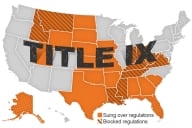You have /5 articles left.
Sign up for a free account or log in.
Most universities use student evaluation forms as a means of measuring student satisfaction and teaching effectiveness of the instructors. What many do not know is that most instructors have a like and dislike relationship with the official student evaluations. For contingent faculty, the evaluations are crucial to keeping their jobs. The evaluations are an easy means for a department to let you go, noting, “Well, your student evaluation numbers are really low.” Furthermore, we all know that there is such a large pool of adjunct faculty ready to get a class or pick up an additional class in the quest to attempt to make ends meet. This is an important issue and I recall feeling that the student evaluations gave me that opportunity where I had to prove that the department made a good choice in offering me some courses, when I worked part-time at two to three college campuses or departments.
Anecdotally, I have heard from many faculty that they never read their student evaluations and others note that they wait until the end of the year to review them. I scan the statistics at the term’s end or the end of the year. If I have time, I might read the qualitative comments. You see, I get the statistics emailed to me, but I have to request to get access to the folder of qualitative comments, which means that I do not look at them often. When I started a new team-taught course, I read the qualitative evaluations immediately to assess what the students were thinking. But, usually I review the qualitative comments as I prepare my dossier for a review or some other official process. And, I usually dread reading them, as the one negative comment will stay with me for the next hour or day.
As part of a recent nomination for a Teaching Award, I had to update my teaching dossier, and I just reviewed 18 months of statistics and qualitative comments and I have to say that my relationship with the student evaluations has changed. I cannot even believe that I am typing this, but I found that the both the statistics and qualitative comments tells me exactly what I already knew: I am an effective instructor. From the qualitative comments, I read that some students really like me and a few students do not like me or the assignments. Some comments brought tears to my eyes: students deciding to major based on my course or that my help in office hours made them not drop out of the program or university. I read that I was making a difference in and outside of the classroom—that I should have clones; it was a validating experience to read pages of these comments. Sure, some noted that I require too much reading or writing and I always expect some to make those comments. The statistics also noted that across the board 82-100% of my students enjoy the courses, assignments, my availability, and the overall course. Those are statistics that I can happily live with and add to this the great, hilarious or constructive comments and I feel satisfied with my teaching.
Now, we all are aware of the websites that comment about instructors and I will not name them. Those websites really find the fans and haters making comments and possibly doling out a chili pepper to an instructor. I do not visit those sites anymore, but going forward, I will make a point of asking for my qualitative comments the same day that I get my statistics.
Victoria, British Columbia in Canada.
Janni Aragon is a Senior Instructor of Political Science in the Department of Political Science at the University of Victoria. She is a blogger at University of Venus and her areas of interest are varied: Gender and Politics, Women and Technology, American Politics, Feminist Theories, Youth Politics, and Popular Culture. Currently she is working on a co-edited Introduction to Women’s Studies textbook and when she has time, she blogs at http://janniaragon.wordpress.com/








